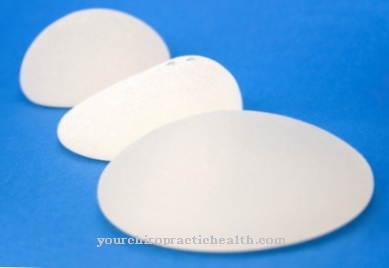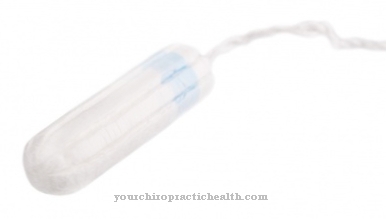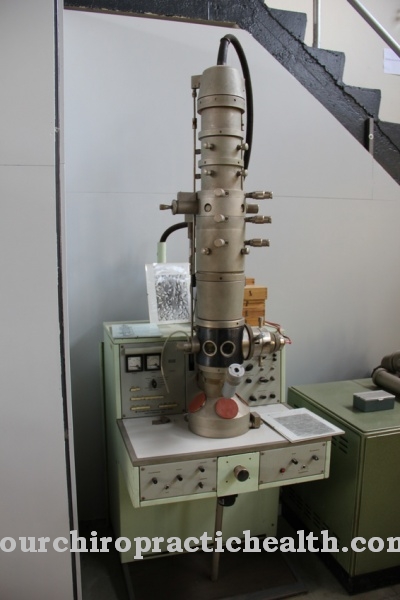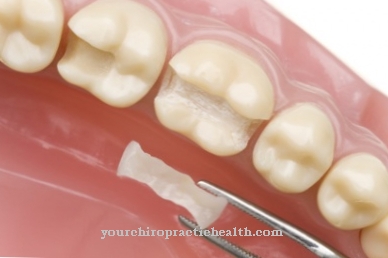A Spirometer is a medical device for measuring and recording the lung function parameters breathing air volume and flow velocity of the breathing air. Modern spirometers use various techniques such as turbine, pneumotachograph or ultrasound. The procedure, called spirometry, is often used in general practices and by pulmonologists (pulmonologists or pulmonologists) as part of a pulmonary function test.
What is a spirometer?

Spirometers are medical devices that provide information on the current lung function within spirometry. With their help, lung parameters can be measured and recorded.
The most important parameters that can be measured with a spirometer can be divided into dynamic flow parameters and static volume parameters. In terms of dynamic flow parameters, the one-second capacity (FEV1, Forced Expiratory Volume in 1 second) and the peak flow (PF) are of particular interest. The FEV1 corresponds to the volume of air that is exhaled with maximum force within the first second after maximum inhalation, i.e. the greatest possible filling of the lungs with air. The peak flow corresponds to the maximum exhaled air flow that is reached during exhalation.
Both parameters are automatically calculated and saved by the spirometer. The method of operation of modern spirometers - regardless of the physical mode of operation - accommodates the determination of the values because no air volumes, but only the flow of the air flow is measured and the absolute volumes are calculated by taking pressure, temperature and humidity into account.
The static values, which are shown by means of a spirometer, are vital capacity (VC), tidal volume and the inspiratory and expiratory reserve volume. The vital capacity is the air volume that is the difference between maximum inhalation and maximum exhalation, while the tidal volume refers to the air inhaled and exhaled per breath with normal breathing.
Shapes, types & types
Original spirometers were based on volume measurements of the inhaled and exhaled air via a vessel floating in liquid, which, depending on the volume of air, was more or less immersed in the liquid and displayed on a measuring scale. The changes in the volumes as a function of time could be recorded in a diagram so that conclusions about dynamic parameters were also possible.
Modern spirometers measure the flow rate, temperature and humidity of the inhaled and exhaled air and thus calculate the volume. In order to prevent hypercapnia, over-saturation and acidification of the blood with carbon dioxide when breathing in the previously exhaled air, a large part of the carbon dioxide could be bound and made harmless by means of a calcium filter.
Small handy spirometers with practical suitability use the physical laws of a small turbine, a pneumotachograph or ultrasound to measure the flow rate of the breathing air. The exhaled air is not caught, but escapes as with normal breathing. In devices with a free-running turbine, the flow rate can be measured from its speed. Spirometers with a pneumotachograph use the pressure difference between incoming and outgoing air on a short piece of lamella to calculate and display the required parameters. State-of-the-art devices use ultrasound to measure the speed of air flow.
All methods have certain advantages and disadvantages, with the advantages of ultrasound devices clearly outweighing them. However, they are also in the upper price segment.
Structure & functionality
Simple turbine spirometers contain a reusable or “single-use turbine” that is located in a pipe with a defined cross-section. At the instruction of the operator, the patient breathes in and out through a disposable mouthpiece. The turbine speed is automatically recorded by the device and converted into the most important flow and volume parameters. The devices are usually only the size of a pocket calculator or cell phone. Turbine spirometers are available in a compact design, in which the computer and turbine part with mouthpiece are integrated in one unit. On the other hand, the computer - also possible with its own small printer - can be separated from the turbine part with mouthpiece and is connected via a thin cable.
Spirometers based on the principle of the pneumotachograph are also usually small and handy. You can do without any moving parts. The centerpiece is a lamellar system in the breathing tube through which you exhale. The lamella system opposes the air flow with a small resistance, which correlates positively with the strength of the breathing air flow. During exhalation, the differential pressure between the lamella inlet and outlet is measured and the necessary parameters are automatically calculated from this.
In the case of ultrasonic spirometers, the integrated heart consists of two ultrasonic transmitters and receivers, which are positioned opposite one another at an angle to the air flow in the breathing tube. The device automatically determines the known parameters from the transit time differences of the ultrasonic impulses with a moving air stream. Ultrasonic spirometers are very precise and easy to use and can be operated with various bacterial filter systems.
Medical & health benefits
Parameters that deviate from the norm and that are diagnosed and confirmed by means of spirometry as part of a lung function test can provide initial indications of certain functional impairments or heart and lung diseases at low cost.
Spirometry is particularly often performed when the airways are narrowed and make breathing difficult. So z. B. suspected bronchial asthma or chronic obstructive pulmonary disease (COPD). Chronic coughing and shortness of breath with breathing noises can be clarified, as can a disorder of the respiratory muscles or the neural respiratory center in the brain. Long-term smokers can also determine the degree of impairment of their lung function using spirometry.
In the positive case, the examination can also provide proof of certain minimum requirements for lung function, for example before performing a serious operation or to prove that pilots are fit to fly.
As a partial examination for preventive health care, spirometry is not part of routine preventive examinations, but must be commissioned separately.



























